No products in the cart.
Italian Wine Classification and Regions

A Guide to Understanding Italy’s Wine Heritage
A Guide to Understanding Italy’s Wine Heritage

Italy is one of the world’sa most celebrated wine-producing countries, boasting a rich history, diverse grape varieties, and a unique classification system that ensures quality and authenticity. Whether you’re a wine novice or a seasoned enthusiast, understanding Italian wine classification and its iconic regions can deepen your appreciation for this timeless beverage. Let’s uncork the details!
Italian Wine Classification: The Quality Pyramid
Italy’s wine classification system is designed to guarantee quality and protect the heritage of its winemaking traditions. The system is organized into four main categories, often depicted as a pyramid:
Vino (Generic Wine)
This is the most basic category, with no specific geographic indication or strict regulations. These wines are often table wines meant for everyday consumption.
IGT (Indicazione Geografica Tipica)
Translating to "Typical Geographic Indication," this category represents wines from a specific region. While the rules are less strict than higher classifications, IGT wines often showcase creativity and innovation, especially from winemakers experimenting with non-traditional grape varieties or techniques.
DOC (Denominazione di Origine Controllata)
The "Controlled Designation of Origin" category ensures that wines meet strict production standards, including grape varieties, aging requirements, and winemaking methods. DOC wines are typically high-quality and reflect the characteristics of their specific region.
DOCG (Denominazione di Origine Controllata e Garantita)
The highest classification, "Controlled and Guaranteed Designation of Origin," is reserved for Italy’s most prestigious wines. DOCG wines undergo rigorous testing and tasting to guarantee their quality and authenticity. Examples include Barolo, Brunello di Montalcino, and Chianti Classico.

Italy’s Iconic Wine Regions
Italy is home to 20 wine regions, each with its own unique terroir, grape varieties, and winemaking traditions. Here are some of the most famous:
1. Piedmont (Piemonte)
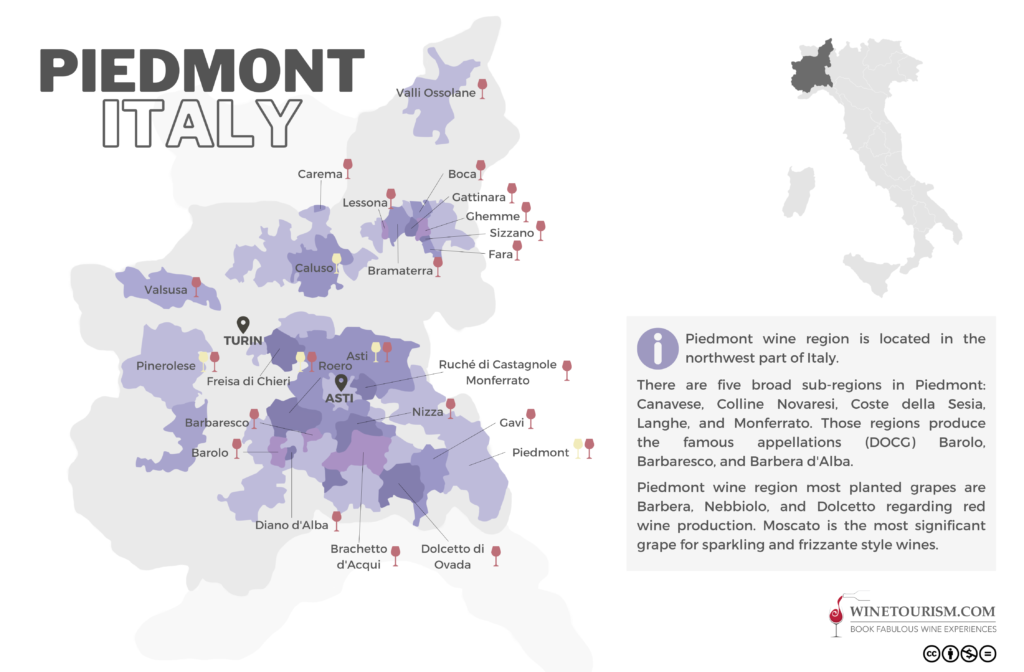
Known For: Barolo, Barbaresco, Barbera, Moscato d’Asti
Highlights: Located in the northwest, Piedmont is often called the "Burgundy of Italy" for its exceptional red wines. Nebbiolo is the star grape here, producing bold, tannic wines like Barolo and Barbaresco.
2. Tuscany (Toscana)

Known For: Chianti, Brunello di Montalcino, Super Tuscans
Highlights: Tuscany is the heart of Italian wine culture, famous for its Sangiovese-based wines. Chianti is a classic, while Brunello di Montalcino offers richer, more complex flavors. Super Tuscans, though not classified under DOC/DOCG, are internationally acclaimed for their innovative blends.
3. Veneto
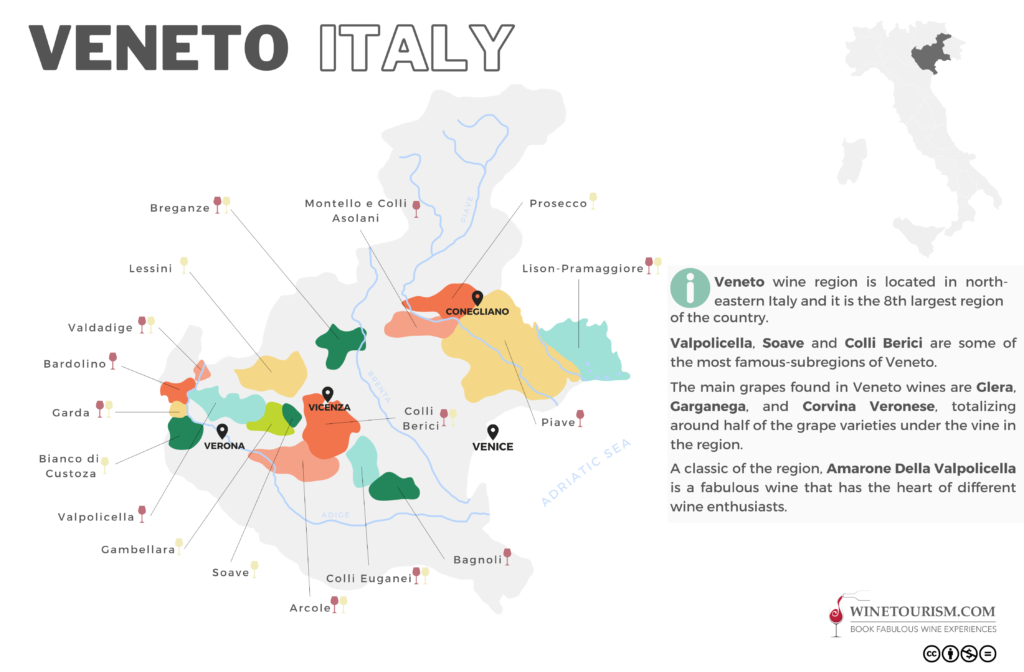
Known For: Prosecco, Amarone della Valpolicella, Soave
Highlights: Veneto is a versatile region, producing everything from sparkling Prosecco to rich, full-bodied Amarone. The latter is made using dried grapes, resulting in intense, concentrated flavors.
4. Sicily (Sicilia)
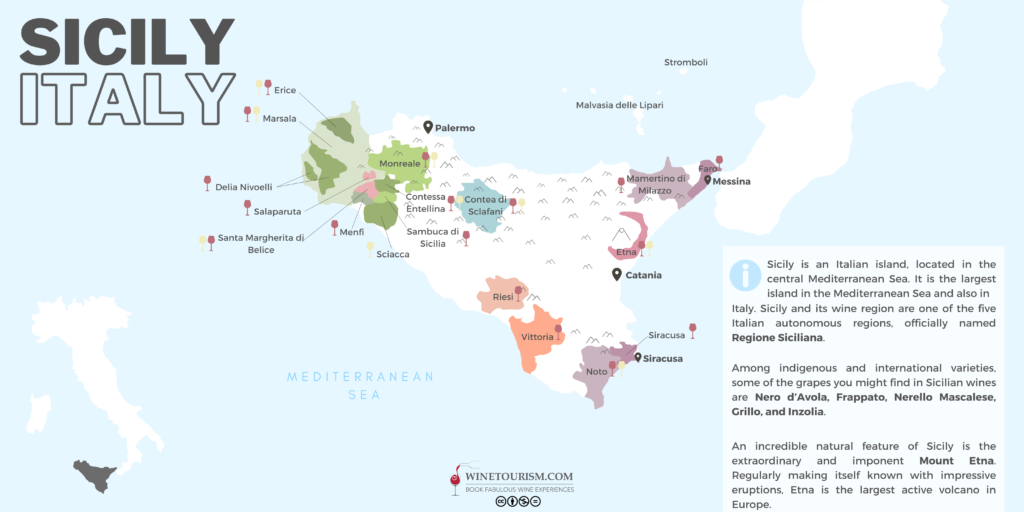
Known For: Nero d’Avola, Etna Rosso, Marsala
Highlights: Sicily’s warm climate and volcanic soils create unique wines with bold flavors. Nero d’Avola is the island’s signature red, while Etna Rosso, grown on the slopes of Mount Etna, offers elegance and minerality.
5. Lombardy (Lombardia)

Known For: Franciacorta, Valtellina Superiore
Highlights: Lombardy is renowned for its sparkling Franciacorta, often compared to Champagne. The region also produces elegant reds like Valtellina Superiore, made from Nebbiolo.
6. Campania
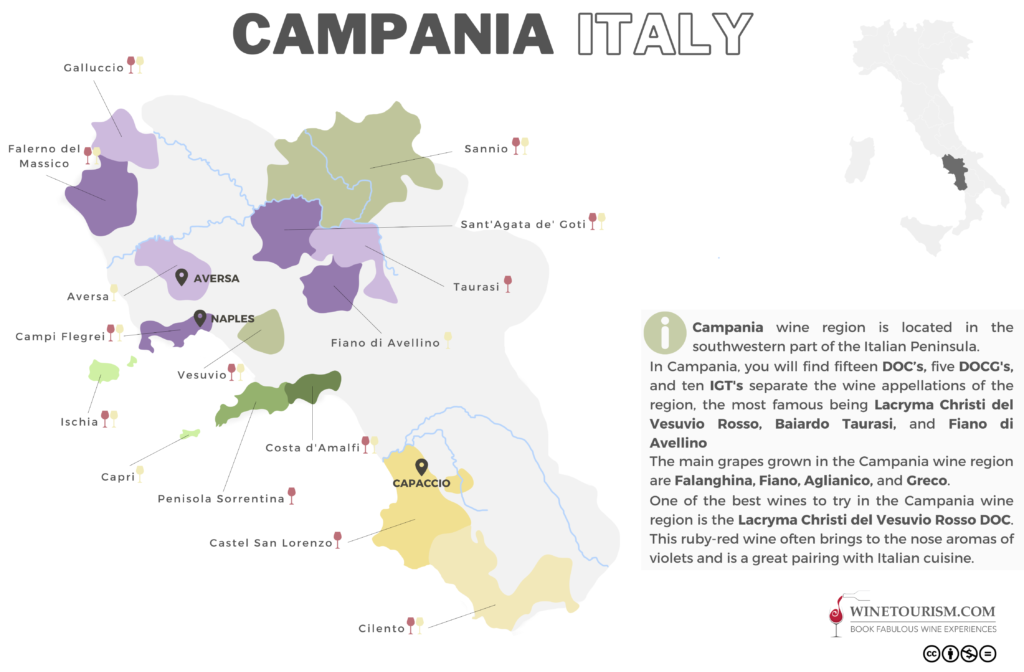
Known For: Taurasi, Aglianico, Fiano di Avellino
Highlights: Campania is home to some of Italy’s oldest grape varieties. Taurasi, made from Aglianico, is often called the "Barolo of the South," while Fiano di Avellino produces aromatic, age-worthy whites.
7. Friuli-Venezia Giulia
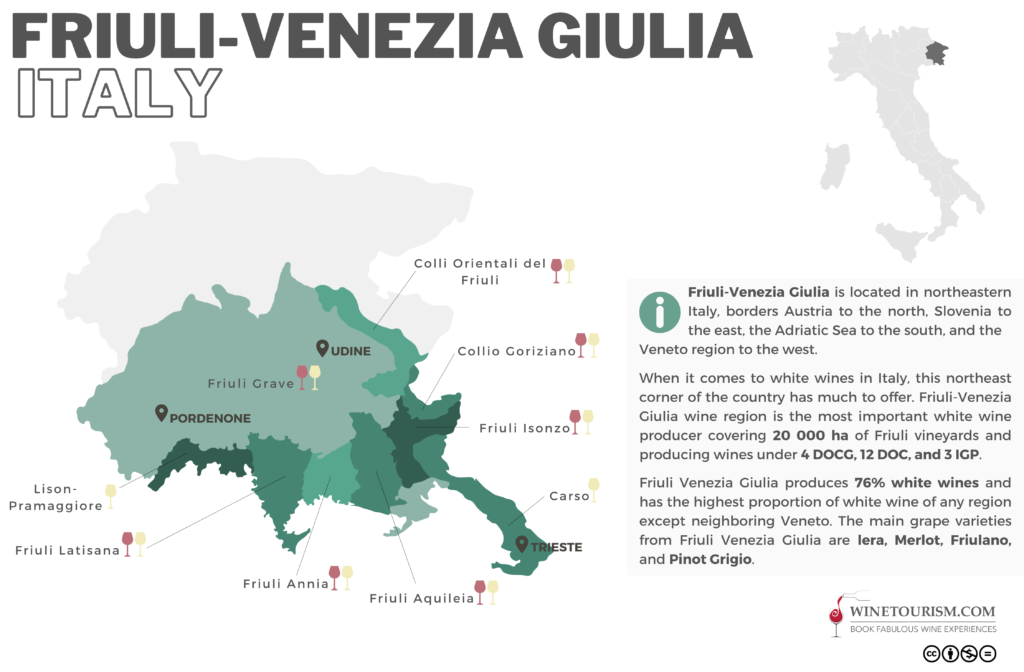
Known For: Pinot Grigio, Friulano, Ribolla Gialla
Highlights: This northeastern region is celebrated for its crisp, refreshing white wines. Pinot Grigio from Friuli is often more complex and flavorful than mass-produced versions.
Tips for Exploring Italian Wines
Start with the Classics: Try a Chianti from Tuscany or a Barolo from Piedmont to experience Italy’s most iconic wines.
Experiment with Regional Specialties: Don’t shy away from lesser-known regions like Umbria, Abruzzo, or Sardinia, which offer incredible value and unique flavors.
Pair with Food: Italian wines are made to complement the country’s rich culinary traditions. Pair a bold Amarone with hearty stews or a crisp Vermentino with seafood.
Conclusion
Italian wine is a journey through history, culture, and flavor. From the structured classifications that ensure quality to the diverse regions that produce world-class wines, there’s always something new to discover. Whether you’re sipping a sparkling Prosecco from Veneto or a robust Brunello from Tuscany, each bottle tells a story of tradition, passion, and craftsmanship.
Ready to explore Italian wines? Join us on one of our wine tours or tastings to experience the magic firsthand. Salute! 🍷






